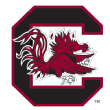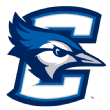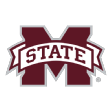The bracket for the 2023 women’s NCAA tournament is here, and March Madness is mere days away, with the First Four set for Wednesday and Thursday before first-round competition tips off Friday and continues into Saturday.
Defending champion South Carolina is six wins away from an undefeated season, and while the Gamecocks are favorites to win it all, several other teams might have something to say about it. Big Ten regular-season champion Indiana went most of the season with just one loss, impressing on both ends of the floor behind the standout play of Mackenzie Holmes and Grace Berger. Stanford, co-Pac-12 regular-season champion, has similarly been to two straight Final Fours, and behind All-Americans Cameron Brink and Haley Jones is hoping to make it three.
National player of the year candidate Caitlin Clark is hoping to lead Big Ten tournament champion Iowa to its first Final Four since 1993. Big East regular-season and tournament champion UConn, which has been to 14 consecutive Final Fours, had a down February but could be peaking at the right time with stars Azzi Fudd and Caroline Ducharme back in the fold.
ACC tournament champion Virginia Tech has had a historic season and is one of the hottest teams entering the tournament, while Maryland has surpassed expectations to fare well in a tough Big Ten despite losing a slew of players in the offseason. And Utah, which shared the regular-season conference title with Stanford, is also an intriguing team that shined in Pac-12 play behind the brilliance of Alissa Pili.
Will South Carolina repeat, or can someone dethrone the Gamecocks? What teams will make unexpected runs, and which will fall short of expectations? Are there any Cinderella runs in store, and which players will emerge as March Madness legends? Here’s everything you need to know about all 68 teams in the field heading into the tournament. For a list of the 32 automatic NCAA bids, click here. (Editor’s note: All team information by Alexa Philippou unless otherwise noted.)
Brackets are open! Head to Women’s Tournament Challenge and fill out your bracket now!
2:46
South Carolina riding 38-game winning streak ahead of NCAA tournament
South Carolina enters the NCAA tournament with a 38-game winning streak, and Elle Duncan explains how this season has been five years in the making.
No. 1 seeds

The Gamecocks haven’t lost since last year’s iteration of this list. That pretty much sums it up. Behind a 38-game winning streak dating to last season and highlighted by a national title, coach Dawn Staley’s squad is the No. 1 overall seed in the bracket and six wins away from becoming the fourth program to repeat as national champions, joining UConn, Tennessee and USC. South Carolina would also be the fifth school to achieve an undefeated season, alongside UConn, Tennessee, Baylor and Texas.
Despite losing point guard Destanni Henderson to the WNBA, the SEC regular-season and tournament champion Gamecocks (32-0) are even better, deeper and more balanced than they were when they won it all in Minneapolis in 2022. Reigning national player of the year Aliyah Boston is still her brilliant self, but Zia Cooke has been more efficient on the offensive end, Kierra Fletcher and Raven Johnson have been a steady tandem at the point and SEC Sixth Player of the Year Kamilla Cardoso has been a nightmare for opposing teams to deal with off the bench. The Gamecocks have matched their hallmark defensive dominance with improved offense — and good luck trying to keep them off the glass (they rank second in the nation at 49.6 RPG).
Staley challenged her team with a tough nonconference slate that included UConn, Stanford, UCLA and Maryland. Even in games in which they trailed by double figures (such as to the Cardinal by 12 and the Huskies by 11), the Gamecocks never lost composure, relying on maturity and experience to rally and come out victorious. Their senior class — headlined by Boston, Cooke, Brea Beal and Laeticia Amihere — is 125-8 throughout their careers in Columbia, and as the season has progressed, it has looked only more and more likely the group will help Staley make history once again in April.

What a season it has been for Indiana. The Hoosiers won their first Big Ten regular-season title since 1983 and sold out Simon Skjodt Assembly Hall for the first time. Indiana made the Elite Eight in 2021, but that COVID-19-impacted season didn’t allow the Hoosiers to share the success as much with their fans. This has been one of the Big Ten’s best regular seasons, and the Hoosiers truly became a national marquee team in coach Teri Moren’s ninth year with the program.
Forward Mackenzie Holmes is averaging 22.3 PPG and 7.3 rebounds while shooting 68.8% from the field — second in Division I and best among Power 5 teams — and was mentioned in national player of the year conversations. Guard Grace Berger (12.5 PPG), in her fifth season in Bloomington, missed eight games with a knee injury but was able to return as a key player in January. Berger and Chloe Moore-McNeil have combined for 276 assists this season. Transfers Sydney Parrish and Sara Scalia and freshman Yarden Garzon have been big additions, combining to average 32 PPG for Indiana.
The Hoosiers were also the top defensive team during Big Ten play, allowing league foes an average of just 64.1 PPG. Losing their regular-season finale on a buzzer-beater at Iowa and then allowing a big comeback vs. Ohio State in the Big Ten tournament semifinals were frustrating for the Hoosiers. But they’ve had time to process it and get ready for a long run in the NCAA tournament. — M.A. Voepel

The Cardinal remain one of the favorites to reach Dallas, but this has felt like a different season than a year ago. Stanford entered the 2022 NCAA tournament on a 20-game winning streak, which included a dominant run through the Pac-12 tournament. Last season’s team also went unbeaten in conference play. There was momentum. This season, the Cardinal lost four times to Pac-12 competition, including a tournament semifinal loss to UCLA. They are still the regular-season co-champs and one of the best teams in the country, with more wins against good competition than any team other than South Carolina. There are just more concerns than normal.
The typically free-flowing, smooth offense has oddly disappeared at times: a nearly scoreless first quarter at Colorado; 46 points in a loss at USC. It still ranks as the fifth-best offense in the country, according to HerHoopStats.com. There just have been questionable moments.
Cameron Brink has emerged as a star, giving Tara VanDerveer two players, along with Haley Jones, whom she can turn to in crunch time. If sophomore Brooke Demetre and senior Hannah Jump are making shots, Stanford has almost too many options. If not, Brink and Jones will carry a heavy load. If Stanford is to advance to a third consecutive Final Four, it will be the two All-Americans leading the way. — Charlie Creme

Virginia Tech might have been an afterthought in the ACC and on the national scene for years, but those days are long gone. Seventh-year coach Kenny Brooks has the Hokies (27-4) in a third consecutive NCAA tournament, this time after leading them to the program’s first ACC tournament title (as the 3-seed) — even more impressive considering Aisha Sheppard, the program’s all-time leading scorer until recently, departed for the WNBA over the summer. They’ve won 11 straight games heading into the Big Dance — defeating the likes of Duke, Louisville, NC State, UNC and Florida State in that span — behind the outstanding play of back-to-back ACC Player of the Year Elizabeth Kitley, plus an elevated stretch from Georgia Amoore, who set the ACC tournament record with 14 3-pointers on her way to being named the event’s MVP. Maryland transfer Ashley Owusu has had a smaller role than expected, but other additions from the portal (Taylor Soule, Kayana Traylor, D’asia Gregg) have been key cogs to the Hokies’ success.
Motivated by their early first-round exit from the NCAA tournament last season, Brooks’ squad is looking to make it beyond the first weekend for the first time since 1999. Relying on their chemistry, staying tough defensively and continuing their hot shooting spree from deep will help the Hokies extend their postseason over the coming weeks and maybe make some more history.
No. 2 seeds
0:36
Azzi Fudd heats up from deep to help UConn win Big East title
Azzi Fudd is feeling it from deep, knocking down three 3-pointers as UConn pulls away in the second half.

The 2021-22 UConn season felt unprecedented. Then 2022-23 happened. After sky-high expectations that a healthy Paige Bueckers and Azzi Fudd could avenge the Huskies’ loss in the 2022 national title game, the Huskies had to operate without the former for the entire season (ACL tear) and the latter (knee injury) for most of it. Several other players, most critically Caroline Ducharme, have dealt with injuries, and even coach Geno Auriemma took two short stints away from the team midseason as he grieved the death of his mother and felt “under the weather and run down.”
Aside from a three-week stretch in February in which UConn struggled to put away Big East opponents and lost to Marquette and St. John’s, Auriemma has had his team (29-5) looking like business as usual. The Huskies won the conference regular-season and tournament titles, but no moment was as promising as its near defeat of top-ranked South Carolina without Fudd. Fairfield transfer Lou Lopez Sénéchal has been a revelation, and the growth of Aaliyah Edwards as a junior gives UConn a forceful inside presence it hasn’t had in some time. Now with Fudd back in the lineup, the Huskies have a floor-spacer and knockdown shooter who can break open a game with a flurry of 3-pointers. To advance to a 15th consecutive Final Four, the Huskies must build off their rampage through the Big East tournament, reestablish their chemistry with Fudd and, more likely than not, get the best out of their superstar when they need it most.
1:51
Caitlin Clark’s triple-double leads Iowa to Big Ten title
Caitlin Clark dominates with 30 points, 17 assists and 10 rebounds as Iowa defeats Ohio State to win the Big Ten championship.

Caitlin Clark is the first name you think of with Iowa, but experience is also a huge part of the Hawkeyes. Clark, Monika Czinano, Gabbie Marshall, Kate Martin and McKenna Warnock have started 86 games together. Iowa is coming off an excellent performance in the Big Ten tournament, which the Hawkeyes won for the second year in a row. Clark had her fourth triple-double of the season — and 10th of her career — in the Big Ten championship game; she leads Division I in assists per game (8.3) and is second in scoring (27.0 PPG).
Iowa has the nation’s best offense, leading Division I in scoring (87.5 PPG), field goal percentage (50.88) and assists per game (21.1). Clark’s ability to stretch the floor with her elite 3-point shooting (a Division I-best 108 treys) feeds into her effectiveness as a penetrator and facilitator. Her connection with Czinano, who has great hands, footwork and strength inside, makes them as good a point guard-post duo as there is in the college game now.
Marshall, Martin and Warnock have combined to hit 131 3-pointers this season, while Czinano is averaging 17.3 PPG and shooting 67% from the field. It means at times, Iowa can be impossible to guard, such as when the Hawkeyes scored 61 first-half points in the Big Ten title game. They also give up a lot of points (71.3) but are better in situational defense than they were a year ago. They are more likely to get stops they absolutely need. Iowa was disappointed by last season’s second-round upset loss at home to No. 10 seed Creighton but hopes for a much better showing this year. — Voepel

Imagine losing Angel Reese, Ashley Owusu and Mimi Collins in the transfer portal — and getting better. The Terrapins pulled it off. For the second time in three seasons, Brenda Frese absorbed the loss of top talent to other schools by going to the transfer portal herself and creating an instant rebuild. Abby Meyers from Princeton has fit nicely as a hybrid guard next to established star Diamond Miller and an emerging one in Shyanne Sellers. The chemistry established among the Terps’ three leading scorers has turned Maryland into a Final Four contender.
But blending nine new players wasn’t smooth from the start. After an inexplicable loss to DePaul over Thanksgiving weekend, the Terps were 4-2. After a 23-point home loss to Nebraska eight days later, the season seemed to be in jeopardy. But then Sellers hit a buzzer-beater to top Purdue on Dec. 8, and the program’s first win over UConn immediately followed — and things clicked. Maryland has lost just three games since: two to Iowa and one to Indiana.
The key to the Terps’ NCAA tournament success might come down to the play of two other transfers, Brinae Alexander and Lavender Briggs. When those two are making shots (Alexander is a 43.6% 3-point shooter), Maryland’s offense is tough to slow. The pair combined for 43 points in another huge Terrapins win, a 28-point blowout of Iowa on Feb. 21. — Charlie Creme
0:18
Alissa Pili gets the lay-in to fall vs. Stanford Cardinal
Alissa Pili gets the lay-in to fall vs. Stanford Cardinal

The Utes winning a share of the Pac-12 regular-season championship is one of the best stories in the country this season. The signs were there last year that Lynn Roberts was building something special in Salt Lake around young guards Gianna Kneepkens and Jenna Johnson. A second-round NCAA tournament appearance after an 11-year absence was nice progress. Then this offseason, Roberts added USC transfer Alissa Pili, and while expectations were tempered — the Utes were picked fifth in the Pac-12 preseason poll — the results were anything but. Pili became a dominant inside force, averaged 20.3 points per game, and won conference player of the year. Roberts won league coach of the year and Kneepkens (15.4 PPG) was voted all-Pac-12. Utah beat Stanford on the regular season’s final day to share the crown with the Cardinal. Now the Utes have the highest seed in program history.
They also won’t sneak up on anyone once the tournament begins. Utah will have to shake off the surprising loss to Washington State in the Pac-12 tournament quarterfinals and the two-week layoff that resulted from losing that early. The break should allow point guard Issy Palmer, another pleasant surprise this season, to get healthy after missing the loss to the Cougars. — Creme
No. 3 seeds

The Blue Devils’ one-year turnaround in Kara Lawson’s third season in Durham is nothing short of remarkable. They finished 10th in the ACC standings (7-11 in conference play) in 2021-22, and in this season’s preseason poll were expected to be only a bit better, coming in seventh. Fast forward a few months, and in arguably the best league in the country, Lawson’s squad was the No. 2 seed in the conference tournament and is dancing for the first time since 2018. The Blue Devils (25-6) have done it by emerging as one of the toughest defensive units in the country, spearheaded by the efforts of ACC Defensive Player of the Year Celeste Taylor. Offense isn’t their strong suit, though: They barely shoot above 40% from the field, and all of their losses have come when they scored 57 or fewer points. In fact, Duke failed to hit 50 in four of its past six games, including a 58-37 loss to Virginia Tech in the ACC tournament semifinals.
3:20
LSU’s Johnson speaks on her mindset and the ‘big three’
Flau’jae Johnson describes how herself, Angel Reese and Alexis Morris mesh together to produce for the Tigers against UGA.

Despite bringing in nine new players, coach Kim Mulkey guided the Tigers to the best start in program history (23-0) in her second year in Baton Rouge, making their matchup versus South Carolina on Feb. 12 a battle between the nation’s two remaining undefeated teams. National player of the year candidate Angel Reese has been the most game-changing transfer in the country, making history with a slew of double-doubles as well as five 20-point, 20-rebound games. SEC Freshman of the Year Flau’jae Johnson impressed as an impact player right away, while all-SEC first-team selection Alexis Morris, the only returning starter from last season’s squad, showed how critical she is to the Tigers’ success with a 31-point outburst in their regular-season win over Tennessee and a 28-point effort in the conference tournament quarterfinals versus Georgia.
After dominating such an easy nonconference schedule (in which none of its opponents were in the top 50 of the NET rankings) and breezing through a somewhat down SEC, it remains to be seen how LSU (28-2) will fare against strong competition. South Carolina trounced the Tigers in February, and then-unranked Tennessee bounced them in the SEC tournament semifinals as they gave up a 17-point lead. Advancing to the NCAA tournament’s second weekend — which they failed to do last year after being upset by Ohio State — seems reasonable, but how much further can they go beyond that?

After being one possession away from an Elite Eight berth last year, the Irish were in the Final Four conversation early during the 2022-23 campaign. Point guard Olivia Miles emerged as a superstar and likely All-American, flanked by All-ACC selections Sonia Citron and Maddy Westbeld and exciting youth in KK Bransford and Cassandre Prosper. Third-year coach Niele Ivey earned ACC Coach of the Year after leading the Irish (25-5) back to national relevance and the ACC regular-season title.
But a recent bout of injuries might preclude a meaningful NCAA tournament run. In mid-January, shooter and heart and soul of the team Dara Mabrey was lost for the season due to an ACL tear and tibial plateau fracture. More recently, Miles has been sidelined after suffering an undisclosed knee injury in Notre Dame’s regular-season finale. Citron did an admirable job running the point and carrying the load for the Irish without her, but the point guard’s absence came back to bite them in the ACC tournament. Miles’ status remains unclear heading into the most important stretch of the season.

After surprising nearly everyone to share the Big Ten regular-season title and reach the Sweet 16 a year ago, the Buckeyes were expected to build on the success with guards Jacy Sheldon, Taylor Mikesell and Madison Greene leading the way. Build they did, but mostly without Sheldon and Greene. Instead, junior Rikki Harris, sophomore Taylor Thierry and freshman Cotie McMahon have made the biggest difference. McMahon is already one of the Big Ten’s most exciting players and got more opportunity with Sheldon sidelined. Now that Sheldon, a preseason top-25 player, is back, coach Kevin McGuff has more options at the perfect time of the season.
Even with all the health setbacks, the Buckeyes got off to a program-best 19-0 start, fueled by a dynamic full-court press, Mikesell’s shooting and the steady presence of senior forward Rebeka Mikulasikova. A midconference streak of five losses in seven games raised significant concerns of peaking too early. However, despite the drubbing by Iowa in the Big Ten tournament championship game, Ohio State finished strong. A 24-point comeback to beat Indiana in the Big Ten tournament semifinals was enough to put the Buckeyes in the Final Four conversation once again. — Creme
No. 4 seeds
1:40
Tennessee stuns LSU with massive 17-point comeback win
Rickea Jackson and Jordan Horston become the first Lady Vols duo to record double-doubles in a conference tournament game since 2014, eliminating the Tigers, 69-67.

Going into the season, many predicted Tennessee could be a Final Four contender. The Lady Vols haven’t looked the part much of the season, and until this weekend (versus LSU) failed to pull off a win against ranked competition. Facing Ohio State, Indiana, UConn, Virginia Tech and Stanford, the Lady Vols played one of the toughest nonconference schedules in the country, one coach Kellie Harper admits might have been too difficult in retrospect, especially as they worked to incorporate several new transfers. Not helping matters, in December they lost star center Tamari Key for the season due to blood clots in her lungs.
But it would be foolish to overlook the Lady Vols (23-11) in March, especially with expected first-round WNBA draft picks and first-team all-SEC selections Jordan Horston and Rickea Jackson leading the way. The duo will need help. Tess Darby must be a consistent threat from the perimeter, Jillian Hollingshead needs to provide a punch inside and the Lady Vols must bring strong defensive energy.
Will Harper’s tough scheduling finally pay off? Final Fours and championships might be a Lady Vols tradition the current team aspires to uphold, but the first step would be to advance beyond the Sweet 16 for the first time in Harper’s tenure.

Graduation/transfer losses, injuries and acclimating newcomers all impacted the Longhorns early in the season, contributing to their 3-4 start and plummet in the rankings. But they got healthier and more cohesive by the Big 12 season, finishing 14-4 and tying for the regular-season championship with Oklahoma. Vic Schaefer — who took the Longhorns to the Elite Eight the past two seasons — was named the conference’s coach of the year.
Defense led the way as Texas won its first regular-season title since 2004. The Longhorns allowed a Big 12-low 57.9 PPG, blocked 5.7 shots per game and won by an average of 16.9 points, all in the top 10 among Power 5 programs. Sophomore Rori Harmon is Texas’ engine, getting 60 steals in the regular season and always making things hard on her point guard counterparts with heavy ball-pressure defense. Offensively, balance has been key as six Longhorns averaged between 12.8 and 9.8 points in the regular season, led by transfer guard Shaylee Gonzales. Harmon averaged a Big 12-best 7.3 assists, which ranks in the top five in Division I. The Longhorns weren’t able to repeat as Big 12 tournament champions, but there are lessons from Sunday’s title game loss they’ll take into the NCAA tournament. — Voepel

Lost in the excitement of Washington State winning the Pac-12 tournament for the first time was that it was the Bruins who took down Stanford in the semifinals, erasing a 10-point, fourth-quarter deficit to beat the team which has dominated the event since its inception. Freshman Kiki Rice scored 22 points in that win, and the Bruins are a different team when she is playing well. Rice, Charisma Osborne and Gina Conti team up to form a versatile backcourt. But when Rice went through a freshman slump in early February, so did UCLA, which went 4-5 over one stretch.
Health has also been a big factor for the Bruins’ 25-win season. Last year they struggled to have enough healthy players to even take the court, and they settled for the WNIT. This year nine Bruins played in at least 32 games and averaged over 12.0 minutes per game. Depth is a luxury Cori Close hasn’t had for a few seasons. The last time she did, in 2019, UCLA made the Sweet 16. — Creme
0:18
Maddy Siegrist fired up after sinking 3 for Villanova
Villanova’s Maddy Siegrist connects on a 3-pointer despite having a defender’s hand in her face.

Coach Denise Dillon and superstar Maddy Siegrist, a two-time Big East Player of the Year, have lifted Villanova (28-6) to new heights, including the program’s best ranking (No. 10) in the latest Associated Press poll. Now they are eyeing the program’s first appearance in the second weekend of the NCAA tournament since 2003. After entering the rankings with wins over Princeton and South Florida, the Wildcats suffered only one non-UConn Big East loss (to Creighton, which Villanova later beat twice), though they were 0-2 against Power 5 teams by a combined 17 points. Siegrist has been in the national player of the year conversation as the nation’s leading scorer (28.9 points per game), while also coming away with 9.3 rebounds and 1.2 blocks per contest. But the team is at its best when Lucy Olsen, Maddie Burke and Christina Dalce are making their presence felt, too, either from the arc or inside.
No. 5 seeds

The Cyclones reached the Sweet 16 last season for the first time since 2010. Adding 6-foot-6 NAIA transfer Stephanie Soares to a returning core led by fifth-year senior Ashley Joens seemed a recipe for a potential Big 12 regular-season title. Unfortunately, the Cyclones lost Soares to a season-ending knee injury in their third Big 12 game. That and the medical retirement of Beatriz Jordao left Iowa State thin in the post.
Still, forward/guard Joens led the league in scoring and was third in rebounding on her way to Big 12 Player of the Year honors as the Cyclones finished third in the league. Joens and junior guards Emily Ryan and Lexi Donarski were again Iowa State’s bedrock players, all averaging over 35 minutes per game in the regular season. As always, the 3-pointer is a major weapon for the Cyclones, who averaged 8.9 per game in the regular season. Iowa State saved its best for last, beating Baylor, Oklahoma and Texas to win the program’s first Big 12 tournament title since 2001, with Joens as most outstanding player. It sends the Cyclones on a high into NCAA play. — Voepel

Fresh off a Final Four appearance but having lost three starters in the offseason, the Cardinals were picked to finish first in the ACC preseason poll. But they ultimately fell out of the AP Top 25 rankings and got the fourth seed in the conference tournament. Still, you can never count out a Jeff Walz squad. The Cardinals demolished Wake Forest and Notre Dame in the ACC tournament before falling to red-hot Virginia Tech in the title game. For a deep run in March, Louisville (23-11) will need to continue to play with the defensive intensity characteristic of Walz’s teams, keep turnovers minimal and get some clutch and efficient play from first-team All-ACC pick Hailey Van Lith. Big tournaments from Chrislyn Carr and Olivia Cochran would be huge, too.

The Sooners were the Big 12’s best offensive team at 85.2 PPG and 20.9 assists per game through the regular season, second only to Iowa in both categories in Division I. Oklahoma also led all Power 5 programs in 3-pointers per game at 9.0. Fifth-year senior guard Taylor Robertson became the NCAA career leader in 3-pointers in January, entering the Big 12 tournament with 527.
In their second season under coach Jennie Baranczyk, the Sooners tied for the Big 12 title, though they lost to co-champion Texas twice. It was Oklahoma’s first regular-season title since 2009, when the Sooners went to the Final Four. The return of guard Ana Llanusa, who missed all of 2020-21 and most of the 2021-22 season due to injury, boosted the Sooners, whose depth and experience became two of their biggest strengths. For the second year in a row, Madi Williams led OU in scoring and Skylar Vann was the Big 12’s Sixth Woman of the Year. — Voepel
0:21
Washington State celebrates after winning Pac-12 title
Washington State stuns UCLA to win the program’s first conference championship in women’s basketball.

The Cougars’ run to their first Pac-12 championship was the most unexpected story of Champ Week. The No. 7 seed knocked off No. 2 seed Utah, No. 3 seed Colorado and No. 5 seed UCLA, and also pushed Washington State’s win total to a program-best 23, four more than last year’s previous high. It’s not even accurate to say Kamie Ethridge has revitalized the program, because with just six winning seasons since 1980 before her arrival, there wasn’t much to resuscitate. She has built this from scratch and now has the Cougars in the NCAA tournament for the third year in a row after just one other appearance in school history. It all began with the recruitment of Charlisse Leger-Walker from New Zealand and Bella Murekatete from Rwanda. Now a junior, Leger-Walker has been one of the Pac-12’s best players and clutch shooters over the past three years. Murekatete has been one of the conference’s steadiest post players and has been a force over the past month. The two combined for 43 points in the Pac-12 championship game win over UCLA. — Creme
No. 6 seeds

After losing leading scorer and first-round WNBA draft pick Mya Hollingshed and some key role players, the Buffs were picked to finish eighth in the Pac-12 in the preseason poll. Instead, Colorado finished fourth and is now in its second straight NCAA tournament. It’s beginning to feel like JR Payne has the program heading in the direction of former coach Ceal Barry’s glory days, when the Buffs made 11 NCAA tournaments in 13 years during the 1990s and early 2000s. This team relies on stingy defense (rated 19th by HerHoopStats.com), Frida Formann‘s timely shooting, Quay Miller‘s inside play and the speed of point guard Jaylyn Sherrod. The offense can sometimes be challenged, as evidence by Colorado’s 49 points in a loss to Washington State in the Pac-12 tournament, but the Buffs start three seniors and a junior. That experience keeps them in games. — Creme

As a No. 10 seed, Creighton was the Cinderella of last year’s NCAA tournament, defeating Colorado, Iowa and Iowa State before falling to eventual champion South Carolina in the Elite Eight. The Bluejays return most of the experience from that run, headlined by first-team All-Big East players Lauren Jensen and Morgan Maly. After beating the South Dakota schools and Nebraska in November, Creighton rose to a program-best No. 13 in the AP poll but slid after falling to Arkansas and Stanford. With five losses in the Big East regular season, the Bluejays weren’t able to catch UConn and Villanova in the standings, although they nearly knocked off the No. 10-ranked Wildcats in the Big East tournament semifinals. Jim Flanery’s squad (22-8) will need to stay hot from the perimeter and play stout enough defense to re-create some of its magic from last season’s run.

Michigan was an Elite Eight team a year ago, and lost one of the best players in program history, Naz Hillmon, to the WNBA draft. The Wolverines got good nonconference wins over South Florida, Baylor, Miami and North Carolina before going 11-7 in Big Ten play. Michigan couldn’t break through against any of the top four programs in the league, losing all of its matchups with Indiana, Iowa, Maryland and Ohio State. But that level of conference competition should have the Wolverines prepared for the NCAA tournament. Leigha Brown (18.0 PPG), Laila Phelia (16.9) and Emily Kiser (16.2) lead Michigan and are three big scoring threats who can make the Wolverines hard to guard. — Voepel

The Tar Heels (21-10) have had an up-and-down season. Among the highs was winning the Phil Knight Invitational in November and receiving their highest ranking in the AP poll since 2014, when they cracked the top 10. But they also had stretches of four consecutive losses as well as dropping five of their past nine games heading into the NCAA tournament. Their more recent skid came when starters Alyssa Ustby and Eva Hodgson were out with injuries. Both were back into the fold by the ACC tournament, where the Tar Heels fell in a sluggish matchup versus Duke that featured a combined 84 points.
Things are trending in the right direction with UNC healthwise, but for North Carolina to return to the Sweet 16 for the second straight year or advance beyond, the Tar Heels will need Deja Kelly to step up as the superstar she has shown flashes of being, such as in the Tar Heels’ big comeback win over Iowa State earlier in the season. Playing a full 40 minutes and closing out tight games — areas where the team has struggled at times — will be critical down the stretch, too.
No. 7 seeds

A certain buzz still exists over the Wildcats from their run to the 2021 national championship game. It’s hard to think of Arizona basketball without the vision of Aari McDonald’s long jumper rimming out, depriving the then-fourth-seeded Wildcats of an improbable title. But after last year’s unceremonious second-round exit at the hands of North Carolina, the core group of seniors Shaina Pellington, Cate Reese and Helena Pueyo and sophomore Madison Conner has some unfinished business after experiencing the highs and lows of the previous two tournaments. They were all young role players two years ago. Now Pellington and Reese are Arizona’s leading scorers and Conner is the club’s best 3-point shooter.
Pellington is especially key. During the Wildcats’ best stretch of the season in early February — in which they went 5-1 with wins over UCLA, USC, Utah and Colorado — Pellington scored 25.0 points per game. She averaged 9.0 points as Arizona lost its final three games heading into the NCAA tournament.
Much of that run came in the McKale Center, where the Wildcats are a much better team than on the road. That three-game skid cost them a chance to host first- and second-round NCAA tournament games. If Arizona is going to reach the Sweet 16, the Wildcats have to do something they haven’t all season: beat a good team on the road. — Creme

The Bears fell short of winning the Big 12 regular-season title for the first time since 2010, which was also the last time they had fewer conference victories (9-7) than this season’s 10-8 mark. It’s understandable, though, after losing two WNBA first-round draft picks — NaLyssa Smith and Queen Egbo — and not getting what was hoped for from heralded transfers Aijha Blackwell (limited to eight regular-season games due to injury) and Dre’Una Edwards (not eligible to play this season).
Even so, the Bears had a solid interior game behind fifth-year senior Caitlin Bickle and freshman Darianna Littlepage-Buggs. Sarah Andrews led the guard play, along with Ja’Mee Asberry and Jaden Owens. And Baylor split its regular-season series with the top three finishers in the Big 12: Texas, Oklahoma and Iowa State. Baylor was upset as a No. 2 seed in the second round of the NCAA tournament last season; the Bears are more likely to be in upset mode themselves this year. — Voepel

In her first (full) year at the helm, Brooke Wyckoff has guided Florida State (23-9) to a 20-win season at her alma mater, turning a preseason ninth-place expectation into securing the No. 5 seed in the conference tournament. Her squad has been powered largely by the sensational play of ACC Rookie of the Year Ta’Niya Latson — who leads the league in scoring at 21.3 points per game and set the conference’s single-season freshman scoring record — as well as second-team selection Makayla Thompson and Sara Bejedi. Latson sat out the ACC tournament with an undisclosed injury, and Florida State gave up a big lead to fall to Wake Forest in the second round. Wyckoff will need her star freshman ready to roll if the team wants to make any noise in March.

For coach Wes Moore, it probably feels like another lifetime ago that his team won three straight ACC tournament titles and was within reach of a Final Four appearance. But with Elissa Cunane and other seniors moving on this past offseason, the Wolfpack (20-11) have had an up-and-down season, finishing .500 in conference play and earning the eighth seed in the conference tournament. Wins over Iowa, Notre Dame and even a recent comeback victory over UNC were promising, but entering the tournament they have lost six of their past 10 games. All-ACC second-team selection Diamond Johnson has missed nine games with an ankle injury, last playing Feb. 16, though ACC Sixth Player of the Year Saniya Rivers has been a bright point. Still, it feels like NC State will need Johnson to be impactful to have any sort of meaningful outing in March.
No. 8 seeds

Coach Yolett McPhee-McCuin directed the Rebels (23-8) to another strong season, helping them obtain double-digit wins in SEC play in consecutive seasons for the first time in program history. Now they’re making back-to-back NCAA tournament appearances for the first time since 2004 and 2005, after last season falling to South Dakota in the first round. Ole Miss has a number of intriguing game results from this season, dropping a nonconference matchup against Utah by merely two points and forcing overtime versus South Carolina during the regular season, a game in which the Rebels ultimately fell by seven. First-team All-SEC selection Angel Baker leads the team in scoring, but Ole Miss primarily prides itself on its defense and rebounding, with SEC second-team and all-defensive pick Madison Scott (also one of the conference’s top rebounders) setting the tone.

The Cowgirls made six NCAA tournament and two WNIT appearances in former coach Jim Littell’s 11 seasons. But they went 9-20 last season and Littell was replaced by Jacie Hoyt. She led the team to a tie for fourth place in the Big 12, which included marquee wins over Texas, Iowa State and Baylor (twice). Oklahoma State lost its last three regular-season games but still earned the No. 4 seed in the Big 12 tournament. The Cowgirls led the league in 3-point field goal percentage (36.8) and were second in scoring (76.8 PPG), led by guard Naomie Alnatas (13.9 PPG), who came with Hoyt from the Kansas City Roos. — Voepel
0:17
Dulcy Fankam Mendjiadeu with the and-1 for South Florida
Dulcy Fankam Mendjiadeu with the and-1 for South Florida

Despite tying the mark for second-most wins in program history, AAC regular-season champion South Florida (26-6) was shockingly bounced from the American tournament quarterfinals by Wichita State. Nonetheless, the Bulls did enough during the regular season to deserve an at-large bid and ensure a spot in the NCAA tournament for the third consecutive year. The Bulls went 5-4 against Power 5 schools and the Big East, with wins over TCU, Georgia Tech, Alabama, Texas and Arkansas, and losses to Villanova, NC State, Michigan and Ohio State. Aside from the Villanova game, all but one of those defeats were by single digits, with the Bulls taking the Buckeyes to overtime. Double-double machine Dulcy Fankam Mendjiadeu, one of the AAC’s top scorers in Elena Tsineke and 3-point ace Sammie Puisis fuel the team; the first two are so dominant they shared the American’s Player of the Year award, while Puisis secured a second-team all-conference nod.

In just two seasons, Lindsay Gottlieb has made USC relevant again. This is the Trojans’ first trip to the NCAA tournament since 2014. The next step is winning a game, something the program hasn’t done since 2006. Gottlieb, who took Cal to the Final Four in 2013, leaned heavily on transfers Kadi Sissoko (Minnesota) and Destiny Littleton (South Carolina) to go from 12-16 to 21-9. They were USC’s top scorers, but sophomore Rayah Marshall looks like a budding star. Marshall averaged a double-double (12.6 PPG, 11.4 RPG) and was second in the country in blocks (3.4 BPG). — Creme
No. 9 seeds
0:25
Kaylynne Truong makes a great defensive play for the steal
Kaylynne Truong makes a great defensive play for the steal

Gonzaga burst onto the scene this season after a 2-1 showing at the Battle 4 Atlantis tournament in which the Bulldogs defeated Louisville and Tennessee but fell to Marquette, propelling them into the AP poll for the first time since 2021. The Bulldogs dropped their only other Power 5 game of the regular season (by 21, to Stanford) and suffered just one loss in conference play, good enough to attain the regular-season WCC title before 2-seed Portland got the best of them in the conference tournament championship game. Yvonne Ejim, Kaylynne Truong and Brynna Maxwell were well represented on the All-WCC first team, with Troung winning Player of the Year and Lisa Fortier taking home Coach of the Year. Gonzaga is the top 3-point shooting team in the country (41.5% from the arc) thanks to Truong’s and Maxwell’s hot shooting, while Ejim is tasked with dominating the paint. The Bulldogs have four Sweet 16 appearances in program history, three under Kelly Graves and one under Fortier.

Marquette (21-10) started the season on a strong note by advancing to the championship game of the Battle 4 Atlantis tournament, taking down Texas and Gonzaga in the process before falling to UCLA in overtime. The Golden Eagles didn’t stake a claim in conference play, coming in as the fifth seed in the Big East tournament, but in February Marquette became just the second program to defeat UConn in league play since the Huskies rejoined the conference in 2020-21. The Golden Eagles’ defense can make life a pain for opposing offenses, but they’re at their best when Jordan King, Chloe Marotta and Liza Karlen also get going offensively. After a WNIT run last year, the Golden Eagles are hoping to earn their first NCAA tournament win in coach Megan Duffy’s tenure in Milwaukee.

The Hurricanes (19-12) are hoping to win an NCAA tournament game for the third consecutive appearance. Coach Katie Meier’s teams are known for their defensive tenacity, but they will be looking for greater execution offensively to keep playing. Meier was disappointed in how her players handled the first quarter of their ACC tournament quarterfinal matchup versus Virginia Tech, in which they were outscored 20-5. But Miami has shown flashes indicating it can compete with top teams, such as in early January when the Canes took down North Carolina and Virginia Tech in consecutive games. All-ACC second-team picks Haley Cavinder and Destiny Harden lead the team in scoring, but the Hurricanes are at their best when they take advantage of their depth, which features players like Jasmyne Roberts, Lola Pendande and Lashae Dwyer.

South Dakota State Jackrabbits
In 2019, the last time the Jackrabbits won the Summit League tournament, they made a run to the Sweet 16. Myah Selland was a sophomore who scored 12.5 points per game on that team. Now, averaging 15.7 points in her sixth season in Brookings, she hopes to end one of the all-time great South Dakota State careers with another Cinderella run. Selland has plenty of help. Three other Jackrabbits — Haleigh Timmer, Paiton Burckhard and Paige Meyer — also score in double figures as South Dakota State blew through the Summit, winning all 21 games by an average margin of 27.9 points. Aaron Johnston, in his 22nd season coaching the Jackrabbits, often fields squads major conference teams don’t like to play against. Wins over Louisville, Mississippi State and Kansas State indicate this is another one of those teams. — Creme
No. 10 seeds

The Crimson Tide (20-10) return to the NCAA tournament for just the second time this millennium, last appearing in the event in 2021 (they reached the WNIT quarterfinals in 2022). First-team all-SEC pick Brittany Davis is a top-five scorer in the conference, one of several players who help make Alabama one of the most efficient 3-point shooting teams in the country. But coach Kristy Curry wasn’t thrilled with her squad’s outing in the SEC tournament’s second round, where the Tide were upset by 14-seed Kentucky, imploring them to step up and make the plays necessary to win this time of year. To make matters worse, it was their fourth consecutive loss. Curry hopes Alabama can turn things around to continue its streak of winning at least one game in each postseason it has played in since 2017.

Coach Katie Abrahamson-Henderson might be new to Georgia and head coaching at the Power 5 level, but she’s not new to the NCAA tournament. Just last year in the second round, she had UConn on the ropes in Connecticut before the Huskies eked out a victory over her UCF team. Many of the players who were part of that matchup — such as Diamond Battles, Brittney Smith and Alisha Lewis — followed Coach Abe to Athens and remain integral to what the Bulldogs do. Transfer Audrey Warren also adds experience going deep in the tournament from her time with Texas. Georgia is hoping to carry into March the momentum it established throughout a strong February, which would entail doing what it does best: playing stifling defense and a headache of a press.
1:37
Princeton edges Harvard to win Ivy League tournament
Harvard Crimson vs. Princeton Tigers: Full Highlights

The Tigers uncharacteristically started 0-2 in Ivy League play, marking the first losses to conference competition in coach Carla Berube’s tenure. But by the time all was said and done, Princeton did Princeton things: The Tigers shared the regular-season title with Columbia and, behind a 17-4 fourth-quarter outburst, clinched their second straight NCAA tournament appearance with a come-from-behind win over 3-seed Harvard in the Ivy League tournament championship. Last season in March, they sent home future No. 1 WNBA draft pick Rhyne Howard and Kentucky before falling by one to Indiana. While Abby Meyers has since moved on to Maryland, Ivy League Player of the Year Kaitlyn Chen, Co-Defensive Player of the Year Ellie Mitchell and Rookie of the Year Madison St. Rose will look to propel defense-focused Princeton (23-5) to build upon last year’s postseason success.

In her first season in Morgantown, coach Dawn Plitzuweit’s Mountaineers finished in a three-way tie in fourth place in the Big 12 and will make the program’s 14th NCAA tournament appearance. She replaced Mike Carey, who had guided West Virginia from 2001-22. Last year, Plitzuweit’s South Dakota Coyotes took down a Big 12 school — Baylor — as a No. 10 seed to advance to the Sweet 16. This year, her West Virginia squad — one of the last teams in the NCAA field — was sparked by a four-guard starting lineup led by JJ Quinerly, a unanimous All-Big 12 first-team pick, and Madisen Smith. West Virginia led the Big 12 in steals (9.62 per game) and turnover margin (6.14) in the regular season. — Voepel
No. 11 seeds

Illinois is in the NCAA tournament for the first time in 20 years; credit new coach Shauna Green. She revitalized the program in her first season: The Illini went 22-9 overall and tied for fifth in the Big Ten at 11-7. That is more conference victories than previous Illinois coach Nancy Fahey had in her five seasons combined (7-77). Fahey was a highly successful Division III coach (five national championships), but her transition to Division I didn’t work. Before coming to Illinois, Green spent six seasons with Dayton, going to the NCAA tournament four times and the WNIT twice. Illinois’ top two scorers are transfer guards: Makira Cook (18.1 PPG), who came with Green from Dayton, and Genesis Bryant (15.1), from NC State. That duo also has combined for 233 assists. — Voepel

The Blue Raiders were the clear top team in Conference USA this season, boasting the best scoring offense and scoring defense on their way to winning the league regular-season and tournament titles, the latter for the second time in three years. After guiding his team to the WNIT semifinals last year, Rick Insell helped Middle Tennessee claim back-to-back 25-win seasons. Their résumé might not be overly eyebrow-rising, but they upset then-No. 18 Louisville by 18 in nonconference play and have managed a top-30 NET ranking, getting the attention of AP poll voters throughout the season. Pacing the offense is Kseniya Malashka (C-USA sixth player of the year), tournament MVP Jalynn Gregory and all-league first team selections Savannah Wheeler and Courtney Whitson.

After a tumultuous stretch in the wake of Vic Schaefer’s departure for Texas, things finally seem to be stabilizing in Starkville, where first-year head coach Sam Purcell already secured the best regular season in a coach’s debut in program history. At 20-10 and 9-7 in the SEC, the Bulldogs will be making their first NCAA tournament appearance since 2019. Along the way, Purcell’s team most impressively took down Tennessee in double overtime and was the only SEC opponent (other than Ole Miss, which lost to the Gamecocks in overtime) to fall to South Carolina by single digits, holding Staley’s squad to 58 points. While second-team All-SEC pick Jessika Carter can dominate inside, the Bulldogs play tough defense and have several shooters (such as JerKaila Jordan and Ahlana Smith) who can light it up from outside.

Katie Gearlds achieved big things as a player at Purdue. She’s well on her way to doing the same as coach at her alma mater. In just her second season, Gearlds has the Boilermakers back in the NCAA tournament for the first time since 2017. She brought in transfers Lasha Petree (Rutgers) and Caitlyn Harper (California Baptist) to supplement returners Abbey Ellis and Cassidy Hardin. Petree carried the offense early in the season, but it has now settled into a more balanced approach. The Boilermakers really want to control the pace. Purdue is at its best when the score is in the 60s. — Creme

After two straight losing seasons, the Red Storm (22-8) are dancing for the first time since 2016 after a strong year in the Big East, where they were the fourth seed in the conference tournament. St. John’s got off to a 13-0 start to 2022-23 and later on assured their inclusion in the field by upsetting UConn in Hartford in February. Joe Tartamella won Big East Coach of the Year after securing the most regular-season victories of his career with the Red Storm. Jayla Everett, a first-team All-Big East selection, and Kadaja Bailey primarily power the offense, but Danielle Patterson showed she can go off too after putting up 20 points off the bench in their big win over the Huskies.

With their run to the Mountain West Conference tournament title, the Lady Rebels joined South Carolina and Cleveland State as the only 30-game winners in the country. They have also now advanced to the NCAA tournament in consecutive seasons after not making it for 20 years. Former Stanford guard and assistant coach Lindy La Rocque has completely turned around the program in her three seasons in Las Vegas. Desi-Rae Young, last year’s MWC Player of the Year, went for 28 points and 17 rebounds in this year’s title game win over Wyoming and was named the tournament MVP. She and guard Essence Booker are the foundation of a team that is 57-9 combined the past two seasons. — Creme
No. 12 seeds

The Bulldogs got attention on the national level after taking Iowa to overtime (before ultimately losing) in mid-November, and following it up with a win over Nebraska. They’ll now get more eyes on them with an appearance in their fourth NCAA tournament in the past six years (and first since 2019). As the No. 4 seed, Drake (22-9) rampaged through its final two games in the MVC tournament, taking down tournament 1-seed Illinois State by 20 points and 2-seed Belmont by 18 in consecutive days. Their high-powered offense features six players averaging at least nine points per game, led by first-team all-conference selection Maggie Bair, but don’t overlook MVC Defensive Player of the Year Anna Miller, either.

Coach Karl Smesko has turned Florida Gulf Coast into arguably the most consistently dominant mid-major in the country, and the 2022-23 campaign (32-3) only added to the legacy. Even after losing Kierstan Bell to the WNBA, the Eagles won a sixth consecutive regular-season title and 10th ASUN tournament crown, and haven’t lost since mid-January. Smesko sports the third-highest winning percentage among active Division I coaches behind UConn’s Geno Auriemma and LSU’s Kim Mulkey. In his unique system, the Eagles take about half of their shots from the 3-point line — more than anyone else in the country — with ASUN Player of the Year Tishara Morehouse and Alyza Winston making the most attempts, while first-team all-conference pick Sha Carter joins them in averaging double figures. FGCU went 1-2 against Power 5 teams, losing to Duke and Stanford by 20-plus but beating Kentucky.
1:16
Portland celebrates after upset win over Gonzaga in WCC championship
Portland lets its emotions show after defeating Gonzaga 64-60 to take the WCC championship.

It took 26 years, but the Pilots are back in the NCAA tournament. Alex Fowler was the team’s leading scorer in 2020 when Portland won the WCC tournament a week before the NCAA tournament was canceled due to COVID-19, denying the Pilots their first postseason appearance since 1997. This season, Fowler was the league’s top scorer and averaged 22 points per game in two WCC tournament games as Portland snapped a six-game losing streak to regular-season champ Gonzaga in the title game. The ultra-consistent 6-foot-2 forward has averaged 17.5 points on 55.1% shooting in her four seasons at Portland. — Creme

Last season, the Rockets won the MAC regular-season title but were eliminated in the conference tournament semifinals, relegating them to WNIT play. Not this year. Toledo (28-4) won the regular-season championship and took care of business in the MAC tournament, beating rival Bowling Green in the final to extend its 16-game win streak (tied for the longest in program history). Quinesha Lockett, Toledo’s top scorer in its highly efficient offense, won both MAC Player of the Year and tournament Most Outstanding Player, while coach Tricia Cullop earned the MAC Coach of the Year honor. This will be the Rockets’ first NCAA tournament appearance since 2017 and ninth overall. Their marquee win of the season came against Michigan in Ann Arbor, while their only two nonconference losses were at the hands of Duke and to Penn State (by one).
No. 13 seeds

The Vikings spent the entire Horizon League season chasing Green Bay. Then in the conference championship game Cleveland State finally caught the Phoenix. The 12-point victory exacted some revenge for two earlier losses to Green Bay and losing out on the regular-season title by a game to the Phoenix. It also provided some redemption from losing in the tournament title game a year ago to IUPUI. Led by Horizon League Player of the Year Destiny Leo (17.9 PPG), the Vikings won 12 of their last 13 to make their first NCAA tournament since 2010. — Creme

On the heels of three consecutive losing seasons, the Pirates (23-9) were picked to finish last in the AAC preseason poll. But they registered their first 20-win season since 2014-15 and then miraculously beat Houston in the AAC tournament title game despite managing just two points in the first quarter. The victory punched the program’s ticket to the Big Dance for the first time since 2007. It was a fitting cap to AAC play for the conference’s coach of the year, Kim McNeill, whose Pirates boasted the best scoring defense in the conference and steal the ball more than nearly anyone else in the country. Synia Johnson took home tournament Most Outstanding Player, while the conference’s top scorer, Danae McNeal, impressed all season long; she won the defensive and most improved player of the year awards, and was an all-conference first-team selection.

In just his second season as head coach, Mark Campbell has the Hornets in the NCAA tournament for the first time. He was there in 2019 as an assistant at Oregon, and he helped Sacramento State navigate a competitive Big Sky with a co-regular season and tournament championship. Campbell relied heavily on Oakland grad transfer Kahlaijah Dean, who averaged 21.1 points per game and was the conference’s MVP — Creme

Last year, Rebecca Tillett led Longwood to its first NCAA tournament appearance, where the Lancers won their First Four game before falling to NC State. Now, Tillett is at Saint Louis and has her new squad going dancing for the first time as well, making her the second head coach in Division I women’s basketball history to win auto-bid conference tournaments at two different schools in consecutive years, joining Lisa Bluder (Drake/Iowa). As the No. 3 seed in their conference tournament, the Billikens (17-17) — who won just nine games last year — upset 1-seed UMass in overtime of the title game. Saint Louis’ Julia Martinez had a triple-double in the finale and was named the tournament’s Most Outstanding Player, while second-team All-Atlantic-10 selections Kyla McMakin and Brooke Flowers lead Saint Louis in scoring.
No. 14 seeds
0:25
Hawai’i clinches NCAA tourney berth with and-1 layup
Hawai’i’is Daejah Phillips scores an and-1 basket with 3.4 seconds left as the Rainbow Wahine win the Big West tourney.

Last season the Rainbow Wahine, then guided by future WNBA draft pick Amy Atwell, advanced to their first NCAA tournament since 2016. Now, despite a seven-loss conference run and third-place finish in the regular season, Hawaii will return to the Big Dance after some clutch play in the Big West tournament, including a double-overtime win in the quarterfinals and a go-ahead, championship-securing and-one from Daejah Phillips with 3.4 seconds remaining in the final. The heroics clinched the eighth NCAA tournament appearance for Hawaii and first consecutive bids since 1989-90. The Wahine are powered by Phillips, the tournament’s MVP, as well as Lily Wahinekapu, an all-Big West first team pick.
1:39
Iona punches its ticket by winning MAAC tournament
Juana Camilion leads the way with 24 points as Iona takes down Manhattan to reach the NCAA tournament.

The Gaels enter their second NCAA tournament (and first since 2016) as winners of the MAAC regular-season and tournament crowns, as well as 20 of their past 21 games. With their first 20-win season since 2016, Billi Chambers was named MAAC Coach of the Year as she led her team to a 26-6 record. Juana Camilion added to her trophy case this season as MAAC Player of the Year, Defensive Player of the Year and tournament MVP, but Ketsia Athias earned headlines for recording the second triple-double in conference postseason history in the championship game versus Manhattan. Earlier this season against Rider, the Gaels set NCAA records for most consecutive 3-pointers made in a game (15) as well as the best 3-point field goal percentage in a game (16-for-18, or 88.9%).

In their inaugural season in the Sun Belt after leaving the CAA, the Dukes are in the NCAA tournament for the first time since 2016. It helps that they could bring senior guard Kiki Jefferson along to the new conference. Jefferson led the league in scoring (18.3 PPG) and was named the Sun Belt Player of the Year. Jefferson found a running mate in Peyton McDaniel, who comes off the bench and makes 39.2% of her 3-pointers. The two combined for 52 points in the conference tournament title game. James Madison never pulled away from a competitive Sun Belt in which the top six teams were separated by one game, but the Dukes dominated the tournament with a 30-point win over Texas State in the final. — Creme

Southern Utah (23-9) might have been newcomers to the WAC this season, but no matter — the Thunderbirds not only won the regular-season title but secured their first trip to the Big Dance after prevailing in the tournament championship game over California Baptist. By easing their transition from the Big Sky, coach Tracy Sanders took home WAC Coach of the Year honors. Cherita Daugherty, Southern Utah’s top scorer, was tabbed Most Outstanding Player of the tournament, but it had four others reach double figures in the title game, including WAC Defensive Player of the Year Lizzy Williamson and Sixth Woman/Newcomer of the Year Tomekia Whitman. Outside of league play, the Thunderbirds faced three Pac-12 opponents this season, as well as mid-major power Gonzaga, losing all those contests.
No. 15 seeds

No team in Big South history has ever been so dominant. The Runnin’ Bulldogs went unbeaten (18-0) in the regular season and then won their first conference tournament title since 2011. Their 21 consecutive wins is the third-longest streak in the country behind South Carolina and UNLV. So it’s no surprise Gardner-Webb has the two best players in the conference in 5-10 fifth-year senior forward Jhessyka Williams and 5-5 guard Lauren Bevis. Alasia Smith, a 5-10 junior forward who is the Big South Defensive Player of the Year, ranks second in the nation in steals (3.5 SPG). — Creme

One of the final teams to punch its ticket to the Big Dance, second-seeded Holy Cross (24-8) knocked off Patriot League regular-season champion Boston University on Sunday in the conference title game, and was the only program to defeat the Terriers in league play this season — twice, at that. With the win, the Crusaders — who dominated the conference in the 1990s and early 2000s — clinched their first NCAA tournament berth since 2007, and the first under third-year coach Maureen Magarity. The victory also avenged last season’s disappointing finish, in which Holy Cross won the regular-season title but was shocked in its opening game of the Patriot League tournament by a buzzer-beater against Navy. Twenty-one points from Bronagh Power-Cassidy, a second-team all-conference selection and the Crusaders’ top scorer, earned her the tournament’s MVP trophy this weekend.

It wasn’t pretty, but the Catamounts (25-6) clinched their seventh NCAA tournament appearance and first since 2010 behind a 38-36 win over Albany in the America East tournament championship game. The 74 points marked the fewest combined points in a conference tournament title game since 2000, according to ESPN Stats & Information. Nonetheless, it’s a huge accomplishment for America East Coach of the Year fourth-year head coach Alisa Kresge, who in addition to sharing the regular-season title with the Great Danes secured back-to-back 20-win seasons for Vermont for the first time in over a decade. The Catamounts have also won 17 games in a row thanks to their stellar defense and the standout play from Emma Utterback (tournament MOP) and Anna Olson, both first-team all-conference players.

SE Louisiana emerged onto many people’s radars by giving LSU a tough game in November, falling by only eight points behind first-team all-conference pick Alexius Horne‘s 28-point outburst. Now, the Lady Lions (21-9) — who were Southland regular-season champs and whose leader, Ayla Guzzardo, earned Southland Coach of the Year — are going dancing for the first time in program history after warding off Texas A&M Commerce in overtime in the conference tournament semifinals and erasing a double-digit deficit versus Lamar in the championship game. Most impressively, they managed to do it without Horne, who missed the final due to injury, thanks to big nights from tournament MVP Hailey Giaratano and Taylor Bell off the bench. Former Lady Lions star and current “Good Morning America” anchor Robin Roberts had already tabbed herself as the “most proud alum” heading into the final and congratulated her alma mater following its big win.
No. 16 seeds
1:39
Southern wins SWAC title game to reach NCAA tourney
Southern doubles up Arkansas-Pine Bluff in the fourth quarter to win the SWAC championship and advance to the NCAA tournament.

A mainstay in the NCAA tournament for much of this century, the Mocs had been absent for five straight years until upending SoCon regular-season champ Wofford in the tournament title game. In Shawn Poppie’s first season as head coach, he led the program to its 16th NCAA tournament appearance. He leaned on 5-foot-11 senior guard Yazz Wazeerud-Din and 5-10 freshman forward Raven Thompson for Chattanooga’s firepower. Thompson was the SoCon tournament MVP, with double-doubles in two of the three games. — Creme

The Hawks’ run through the CAA tournament — in their first year in the conference, no less — was nothing short of historic. They won four games in four days, held all their opponents to 60 or fewer points and took down the three teams that shared the regular-season CAA crown: Northeastern, Drexel (which features one of the nation’s top scorers in Keishana Washington) and Towson. The end result? Their first NCAA tournament appearance since 1983. They also became the first 7-seed to win the CAA tournament. Leading the effort was tournament MVP Bri Tinsley, who scored at least 14 in each game, and Belle Kranbuhl, a conference all-defensive team pick.

With a win over Howard, the Spartans obtained the MEAC tournament crown for the first time since 2002, ensuring their spot in the 2023 NCAA tournament field after making the title game two other times over the past five years but losing both instances. The Spartans, who pride themselves on their defense and rebounding, finished as conference regular-season champions, and their 26-6 record is tied for the most wins in program history. Camille Downs and Deja Francis earned first-team All-MEAC honors, the former also being tabbed Defensive Player of the Year, while Kierra Wheeler was named tournament Most Outstanding Player.

The Pioneers are dancing for the fourth time in program history and first time since 2012 after defeating regular-season champion Fairleigh Dickinson in the NEC championship game Sunday. Despite losing nine players from an eight-win squad last season, Sacred Heart (18-13) rebounded nicely and has played its best basketball down the stretch. Star Ny’Ceara Pryor nearly recorded a triple-double in the final, too, and has turned heads as the first player in conference history to win player of the year, defensive player of the year and rookie of the year all in the same season. She also leads the country with four steals per game.

Southern stunned the nation by upsetting defending champion Jackson State (which had just one loss in league play prior to the postseason) at the buzzer in the SWAC tournament semifinals thanks to Aleighyah Fontenot‘s running 3-point heave with 0.4 seconds remaining on the clock. The magic didn’t run out there; the fourth-seeded, defense-minded Jaguars (18-14) took down 7-seed Arkansas Pine-Bluff in the championship game 62-53 to secure their spot in the NCAA tournament — their sixth appearance in program history and first since 2019. Genovea Johnson is their best scorer, but Amani McWain was named MVP of the tournament in Alabama.

For the first time in 23 years, the Golden Eagles are playing in the NCAA tournament. Tennessee Tech did it by outdueling OVC regular-season champ Little Rock and one of the stingiest defenses in the country in the title game. Three Golden Eagles average double-figure scoring, led by Maaliya Owens; and 5-8 senior Jada Guinn, the most efficient point guard in the conference, took home tournament MVP. — Creme
